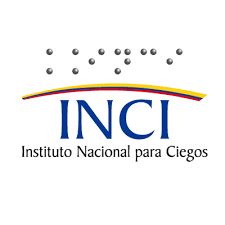Quality review of power for lighting system of signaling installations in Bogota, Colombia

Universidad Distrital Francisco José de Caldas
Estudiante
email: jirodriguez@udistrital.edu.co

Universidad Distrital Francisco José de Caldas
Estudiante
email: jirodriguez@udistrital.edu.co

Universidad Distrital Francisco José de Caldas
Doctorado (c) en Ingeniería Informática. Profesor.
email: jirodriguez@udistrital.edu.co
Introduction: This article is a case study of the project “Energy quality directed to harmonic values in the lighting systems used in traffic light intersections of the city of Bogota, D. C.”. The project was conducted during the year 2015 by the Universidad Distrital Francisco Jose de Caldas.
Methodology: The measurements were directed to harmonic distortions and power factors in the lighting systems -type led in Bogota, incandescent and halogen, to contrast with the recommended thd levels for every type in iec 61000-3-2. A digital meter, model everfine pf9811, was used in the analysis.
Results: Significant harmonic distortion and encumbrance of the grid were determined when using the new led lighting system, which renders a significant drop in energy quality with which the control equipment operates.
Discussion: Technical challenges are evidenced for the start-up of intersections due to electromagnetic disturbances that affect the electric grid caused by new lighting technologies. Because of that, the electromagnetic disturbances in the electric grid must be mitigated or eradicated. The conclusion and recommendation of the case study is the observation of existent base values in this article and in new research.
Presidencia de la República de Colombia. (1968, dic. 26). Decreto 3133, Por el cual se reforma la organización administrativa del distrito especial de Bogotá [en línea]. Disponible en: http://www.alcaldiabogo-ta.gov.co/sisjur/normas/Norma1.jsp?i=3788
Consejo de Bogotá, Colombia (2006, nov. 22). Acuerdo 256, Por el cual se dictan normas básicas sobre la estructura, organización, y funcionamiento de los organismos y las entidades de Bogotá D.C. y se expiden otra disposiciones [en línea]. Disponible en: http://www.alcaldiabogota.gov.co/sisjur/normas/Norma1.jsp?i=22227
El Tiempo, “Sobre el metro de Bogotá se debate hasta en el exterior”, El Tiempo,p. 4, 23, oct. 2015. [en línea]. Disponible en: http://www.eltiempo.com/bogota/metro-de-bogota-debate-internacio-nal/16411535
El Espectador, “‘Si el trazado original de la alo se hace, desaparecen tres humedales’: Petro”, El Espec-tador,21, mayo 2015. [en línea]. Disponible en: http://www.elespectador.com/noticias/bogota/si-el-trazado-original-de-alo-se-hace-desapare-cen-tres-articulo-561855
Revista Semana “Diez retos para el nuevo alcalde”, Revista Semana,07, p. 1, junio 2011. [en línea]. Dis-ponible en: http://www.semana.com/nacion/articu-lo/diez-retos-para-nuevo-alcalde-bogota/240769-3
TransMilenio S.A., “Informe subgerencia técni-ca y de servicios transmilenio s. a. Estadísticas de oferta y demanda del Sistema Integrado de Trans-porte Público –sitp”, TransMilenio S.A. Bogotá, In-forme No. 21, agosto 2015. [en línea]. Disponible en: http://www.transmilenio.gov.co/loader.php?l-Servicio=Publicaciones&lTipo=WFactionA&lFun-cion=visualizar&id=13249&bd=m
El Tiempo, “El runt tiene la realidad del ‘censo’ automotor en Colombia: hay más de 11 millones de vehículos”, 7, marzo 2015 [en línea], Disponible en: http://www.eltiempo.com/revista-motor/actualidad/tecnologia/runt-realidad-censo-automotor-colom-bia-hay-11-millones-vehiculos/21229
J. Margolis, “8 million people. No subway. Can this city thrive without one?”, PRIis the World 21 oct. 2015 [en línea]. Disponible en: http://www.pri.org/stories/2015-10-21/can-modern-megacity-bo-got-get-without-subway
A. Vásquez, “Semaforización en Bogotá: plan de choque”, El Tiempo, 5, dic. 2008 [en línea]. Disponible en: http://www.eltiempo.com/archivo/docu-mento/CMS-4707385.
A. Chica, “Instalan red de semáforos inteligentes en Bogotá”, Caracol Radio, 25, junio 2013 [en línea]. Disponible en: http://caracol.com.co/ra-dio/2003/05/26/bogota/1053900000_036217.html
E. Chávez, I. Rodríguez y M. Tarazona, “Estudio de características técnicas de los computadores de tráfico y equipos de control de tráfico local, proyectando un sistema inteligente de tráfico (sit), de acuerdo a las necesidades de la ciudad de Bogotá D.C.”, Tesis de pregrado, Fac. Ing. Elect., Universidad Distrital Francisco José de Caldas, Bogotá, Colombia, 2015.
Secretaria Distrital de Movilidad, Bogotá D. C. y Universidad Francisco José de Caldas, “Convenio Interadministrativo 995 de 2014. Mantenimiento correctivo y preventivo de los semáforos y redes eléctricas del sistema de semaforización de Bogotá D.C. y de las nuevas intersecciones que se vayan integrando al sistema”, 2014.
Alcaldía de Bogotá, Resolución 1050 de 2004: por la cual se adopta el Manual de Señalización para calles, carreteras y ciclorutas de Colombia, Ministerio de Transporte de Colombia, Bogotá D.C. 5 mayo de 2004, [en línea]. Disponible en: http://www.alcaldiabogota.gov.co/sisjur/normas/Norma1.js-p?i=13958
A. Abreu, “Calidad de potencia eléctrica en re-des de distribución”, enelven Energía Eléctrica de Venezuela, Venezuela, Manual junio 2005 [en línea]. Disponible en: https://es.scribd.com/doc/15283024/Manual-de-Calidad-de-Poten-cia-Electrica-en-Redes-de-Distribucion
M. Monzón, Calidad de suministro eléctrico: Huecos de tensión, mitigación de sus efectos en las plantas industriales. Madrid, España: Publicaciones Universidad Carlos III de Madrid, 2013, pp. 16-30.
A. V. Méndez, “Desarrollo de una metodología para el control de la señalización del tráfico y el sistema de semaforización”, Tesis de Maestría, Fac. Ing. de Telecomun., Universidad Nacional de Colombia, Bogotá, 2010 [en línea]. Disponible en: http://www.bdigital.unal.edu.co/2450/
A. Baggini, Handbook of power quality. West Sus-sex, Inglaterra: John Wiley & Sons, Ltd., 2008, pp. 31-65.
R. Guerrero y I. Martínez, Calidad de energía Factor de potencia y filtrado de armónicos, México, D. F., México: McGraw-Hill, 2012, pp. 15-16.
abb, “Guía de productos de alta tensión: Condensadores para el filtro de armónicos”, junio 2015, pp. 4-8 [en línea]. Disponible: https://library.e.abb.com/public/897462d590876b5fc125791a003bd1e0/1TXA007107G0701_CT8.pdf
S. Ramírez y E. Cano, Calidad del servicio de energía eléctrica. Manizales, Colombia: Publicaciones Universidad Nacional de Colombia, 2006, pp. 21-101 [en línea]. Disponible en: http://www.bdigital.unal.edu.co/5073/1/samuelramirezcasta-no.2006.pdf
ieee, “ieee Recommended Practice for Monitoring Electric Power Quality I”, ieee Std 1159-2009, 25, junio 2009. [en línea]. Disponible en: http://ieeex-plore.ieee.org/servlet/opac?punumber=5154052
J. Seymour y T. Horsley, Los siete tipos de problemas en el suministro eléctrico. Rhode Island, usa: apc publications, 2005, pp. 4-18 [en línea]. Disponible en: http://www.apc.com/salestools/VAVR-5WKLPK/VAVR-5WKLPK_R0_LS.pdf
creg, Ministerio de Minas y Energía de Colombia(2007, dic. 27). Resolución 080 de 1995. Por el cual se adoptan decisiones en materia de tarifas de energía eléctrica y otras disposiciones de transición.
S. R. K. Kanaesalingam y V. K. Ramachandaramurthy, “Inteligent Driven Power Quality Monitoring Using Pseudomeasurement Technique”, en 10th Interna-tional Conference on Electrical Power Quality and Utilisation, 2009. EPQU 2009. Poland, 2008.
R. Targosz y J. Manson, “Cost of poor power quality”, en Handbook of Power Quality, A. Baggini, Ed. West Sussex, Inglaterra: John Wiley y Sons, Ltd., 2008, pp. 545-594
J. Kosmák, S. Misak y L. Prokop, “Power quality dependence on connected appliances in an off-grid system”, in 16th Int. Scien. Conf. on Electrical Power Engineering (epe), Kouty nad Desnou, 2015.
J. Arrillaga, D. A. Bradkey y P. S. Bodger, Power Sys-tem Harmonic, New York, Estados Unidos: Wiley, 1985, pp. 61-193.
C. L. Wadhwa, Electrical Power Systems. New Delhi, India: New Age International, 2014 [en línea]. Disponible en: http://www.newagepublishers.com/ser-vlet/nagetbiblio?bno=001099
M. Islam, N. Chowdhury, A. Sakil, A. Khandakar y H. Abu-Rub, “Power Quality Effect of Using Incan-descent, Fluorescent, cfl and led Lamps on Utility Grid”, en First Workshop on Smart Grid and Renewa-ble Energy: sgre 2015, Doha, 2015.
ieee Industry Applications Society, Power En-gineering Society, Recommended Practices and Requirements for Harmonic Control in Electrical Power Systems. New York, Estados Unidos: Insitute of Electrical and Electronics Engineers Publica-tions, 1992, p. 75.
Everfine ltd, “User’s Manual pf9800 Series: Power Digital Meter”, 13, nov. 2015 [en línea]. Disponible en: http://www.everfine.net/productinfo.php?pi-d=62&clid=17
International Electrotechnical Comission, “Electro-magnetic compatibility (emc) – Part 3-2: Limits – Limits for harmonic current emissions (equipment input current ≤ 16 A per phase)”. iec 61000-3-2, International standard concerning the harmonics emitted by electric equipment, May 2006.
Copyright (c) 2016 Ingeniaría Solidaria

This work is licensed under a Creative Commons Attribution-NonCommercial-NoDerivatives 4.0 International License.
Cession of rights and ethical commitment
As the author of the article, I declare that is an original unpublished work exclusively created by me, that it has not been submitted for simultaneous evaluation by another publication and that there is no impediment of any kind for concession of the rights provided for in this contract.
In this sense, I am committed to await the result of the evaluation by the journal Ingeniería Solidaría before considering its submission to another medium; in case the response by that publication is positive, additionally, I am committed to respond for any action involving claims, plagiarism or any other kind of claim that could be made by third parties.
At the same time, as the author or co-author, I declare that I am completely in agreement with the conditions presented in this work and that I cede all patrimonial rights, in other words, regarding reproduction, public communication, distribution, dissemination, transformation, making it available and all forms of exploitation of the work using any medium or procedure, during the term of the legal protection of the work and in every country in the world, to the Universidad Cooperativa de Colombia Press.










